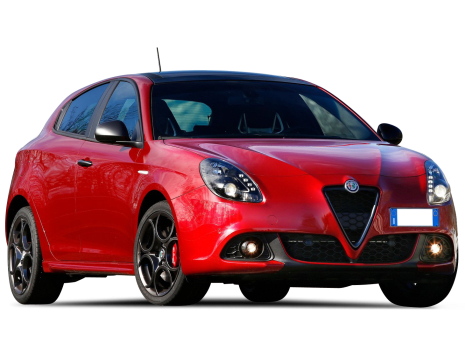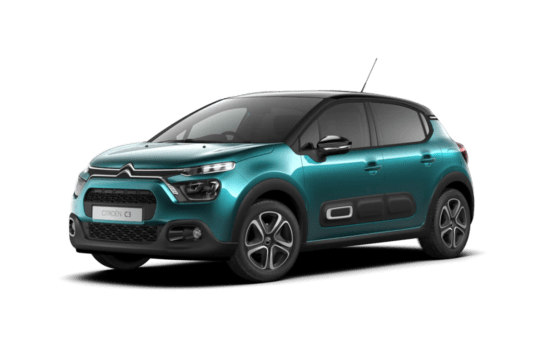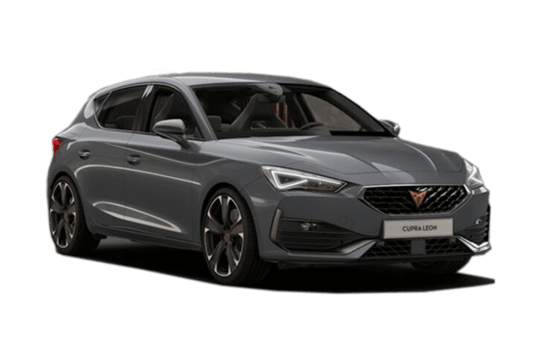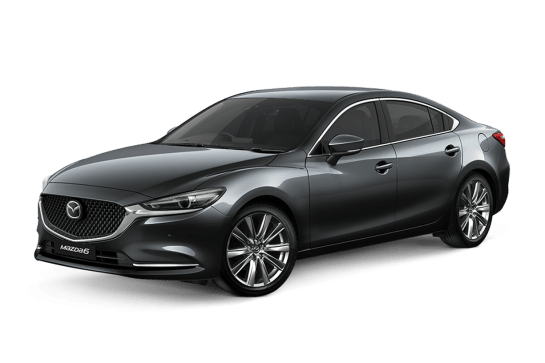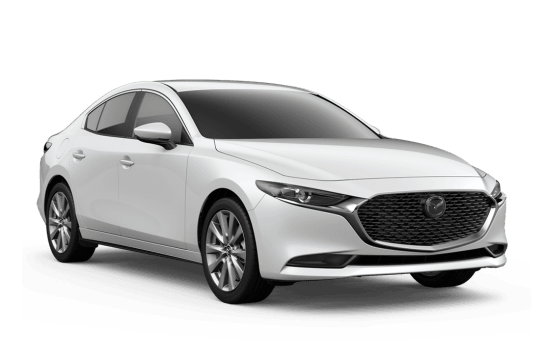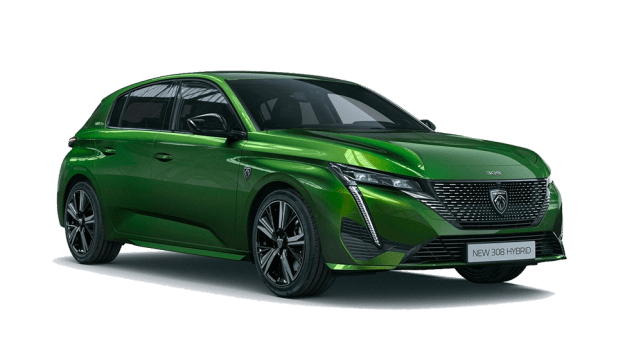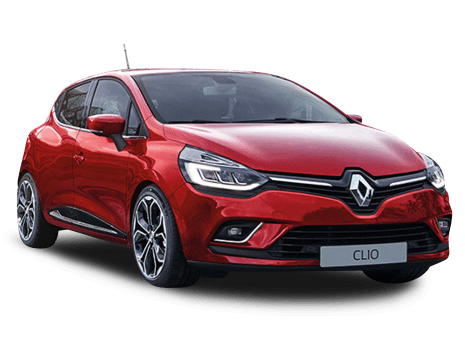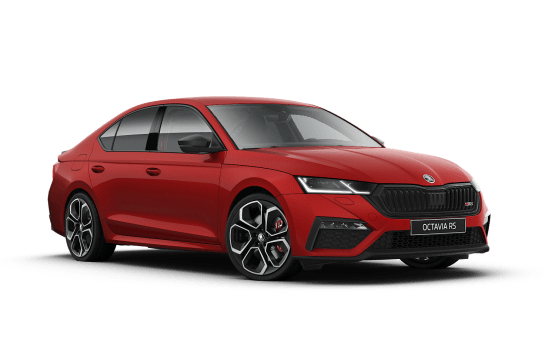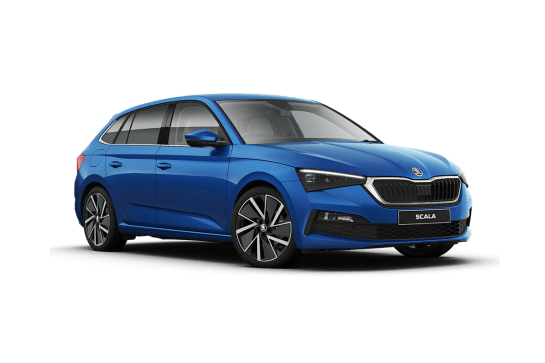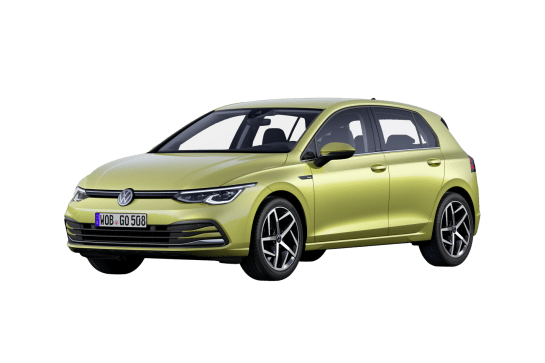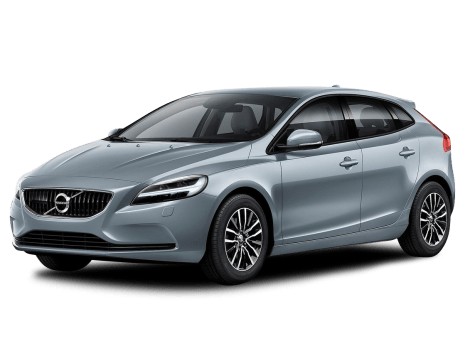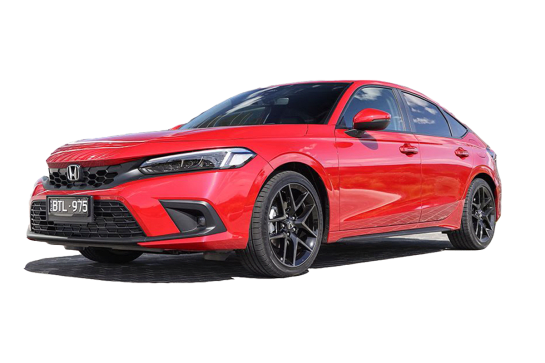
Honda Civic VS Toyota Prius
Honda Civic
Likes
- Great interior
- Lovely chassis
- Excellent engine
Dislikes
- Missing some safety gear
- Tight access to boot space
- Old media software
Toyota Prius
Likes
- Seamless hybrid drive
- Incredible fuel efficiency
- Comfortable and spacious
Dislikes
- Polarising exterior
- Dorky central instrument cluster
- Not so engaging to drive
Summary
Honda Civic
The Honda Civic's 10th generation is drawing to an end. Well, I say that, but there's still a pretty solid chance that the 11th generation won't quite be here this time next year.
I make the point because we've already seen a "prototype" for series 11 of the Honda Civic Story, but also because we won't actually get the car we've seen – the sedan. Just 20 per cent of Civic sales go to the booted version and then you have to merge that data with the rise of SUVs, both with Honda buyers and the market at large.
Things is, I think the sedan is the better of two for a variety of reasons which I will explain below. I also think the Civic, despite its advancing "age" (four years isn't really that long in the current climate) is still a fairly sensible choice among its peers, which include some serious competition.
| Safety rating | |
|---|---|
| Engine Type | 1.5L turbo |
| Fuel Type | Regular Unleaded Petrol |
| Fuel Efficiency | 6L/100km |
| Seating | 5 seats |
Toyota Prius
What to say about the Toyota Prius in 2021? A car that was once a technology trailblazer seems now to have become properly retro, even while it’s still being built and sold.
The awkward-looking wedge, an eco-punk icon, not only brought Toyota’s hybrid synergy drive to the masses, it also debuted the brand’s excellent TNGA architecture and set the scene for the company's absurd hybrid success, which now sees the RAV4 version topping the sales charts.
So, after all these years (25 to be precise), is the Prius’s time finally over? Or does this quaint hybrid hero still have more to offer? I took a top-spec I-Tech for a week to find out.
Read more about
| Safety rating | |
|---|---|
| Engine Type | 1.8L |
| Fuel Type | Hybrid with Regular Unleaded |
| Fuel Efficiency | 3.4L/100km |
| Seating | 5 seats |
Verdict
Honda Civic7.3/10
As a car to drive, the Honda Civic feels great. It had a good start, but the later addition of the turbo 1.5 and the continuous honing of the chassis, steering and driveline – an endearing, unheralded trait that Mazda and Honda do so well – has taken what was a solid car and turned it into one I'd genuinely consider owning, even in this wild orange colour.
What it doesn't have is a full suite of safety systems, which is a real shame, because its main rivals do. Some of us are happy to forego things such as reverse cross-traffic alert and some are not. If you can, the Civic sedan should be in the reckoning. And the clock is ticking.
Toyota Prius 7.4/10
The Prius can rest its weary head. The Age of the Hybrid has begun. Even though this iconic eco car might have lost its ultimate purpose to more mainstream models in the last few years, it’s still the best execution of Toyota’s hybrid tech on the market and if you can look past its divisive-as-ever looks, it’s comfortable and practical, too.
The brand’s Australian division promises the Prius will stick around in one form or another, so we’re keen to see what its next iteration will look like. Plug-in? Fully electric? Time will tell.
Design
Honda Civic
Making fun of the Civic's over-supply of angles and lines is really very easy, so for once I'll refrain. Partly because the sedan is better than the hatch in this respect and also because – somehow – I have become quite fond of its wacky face. The sedan's profile is also more flowing and, with all the RS piano black and extra aggro (which ironically means yet more lines and angles), it sat much more happily in my camera lens than before. I wonder if the Civic's controversial looks have aged well in the same way Chris Bangle BMWs have? Because we're all suddenly pretty fond of those now, aren't we?
My changed opinion is bound to infuriate Honda's designers who have cleaned up the Civic for its next version. At this point I should mention that the sedan is on its last legs here in Australia – we won't be getting the next one.
The interior is as good-looking as it is practical. I still don't like the angles of the gauges in the left and right sections of the dash, but the central digital dash section is really good and easy on the eye. The RS picks up some subtle features like the strip of chequered flag fabric on the seats. It's a nice, clean look and I like the use of metallic materials on the climate controls and the stereo. It's a very calm interior, quite a contrast to the exterior.
Toyota Prius
The Prius is the very visage of economic motoring. Derided by big-engine lovers, and adored by the eco-crowd, the fact that the Prius’s wedge-shaped frame is more about function than form tells you everything you need to know about this car.
It blends with Toyota’s latest design language, the face and bodywork containing some subtle nods to other models that would launch after it, like the Corolla, Camry, and C-HR.
What always surprises me about even this top-spec Prius is its dorky ride height. For a car with such a low drag coefficient, it sits so far off the ground! The 17-inch wheels look almost out of alignment with the body in those wheelarches.
Round the back, the Prius’s integrated spoiler and glasshouse bodywork are as divisive as ever, with more extreme pointed light fittings leaning into the effect created by its boxy, rear three-quarter view and mirroring the shape of the LED headlights at the front.
Of course, this car is less about being looked at as it is about its drag coefficient of 0.24 Cd, which is one of the lowest on any production car.
Inside, things again prove divisive, with a minimalist dash, a swoopy gloss highlight piece that frames the central vents and multimedia screen, and an odd, centrally mounted dash cluster, which is a usability faux pas.
In the case of the I-Tech at least there’s a holographic display which can put up useful information to help prevent your eyes from drifting too far from the road. Still, I can’t help but feel like this whole interior ethos is futuristic for the sake of being futuristic, with a little less thought given to how practical it is, compared to the brand’s other models.
The leather-appointed trim across the wheel and soft plastics in the door and dash-topper are appreciated, and there’s attention to detail in the little ‘Prius’ logos on the vents. However, I found the dull multimedia screen to be susceptible to glare during the day, and the big integrated panel in which it sits is made from a tinny gloss plastic, which will easily to get covered in fingerprints and scratches.
Practicality
Honda Civic
The Civic's cabin is swimming in space and and filled with comfortable seats and lots of storage.
The back seat is super-spacious as it has been forever. Having driven the i30 Sedan last week, I'm having difficulty splitting the two for legroom and lounging space. Where the Civic loses out – and it's close – is in rear headroom.
There are four cupholders and bottle holders and a massive central bin between the front seats, big enough to conceal the massive new PlayStation 5 (okay, maybe not that big, but it it certainly looks big enough).
The boot holds a gigantic-for-a-small sedan 519 litres with the seats in place. Honda doesn't supply a total figure with the seats down, but it will be a lot. The opening for the bootlid is a little tight, so don't get too excited at Ikea.
Toyota Prius
If nothing else, all of the Prius’s edgy design gives it plentiful interior space. Toyota granted this generation of Prius a low seating position and tall roof, which combine with the distant dash elements to make for a spacious cockpit for the front two occupants.
The seat design in the top-spec I-Tech is also cushy, reminiscent of the seats in high-spec Camrys, and I had absolutely no trouble finding a comfortable driving position. If there’s one thing to be said for the annoying, centrally mounted instruments, it’s that you don’t need to consider the position of the wheel interfering with their visibility.
The Prius’s total glasshouse grants superb visibility out the front and sides, with large wing-mirrors, too. The only downside is that integrated spoiler at the back, which makes for a distracting view out the rear mirror that I’m sure any owner will quickly become accustomed to.
Soft trims across the doors and centre console, even in the back seat, make the Prius cabin a comfortable place to be, too.
Ergonomics have not been forgotten, with the multimedia screen and climate unit having useful and easy-to-reach physical dials and toggles for all the key functions. Even changing gear is a breeze in the Prius, with its odd little rosebud-shaped shifter simply a flick of the wrist from where your arm sits.
I do wish Toyota had made better use of the large area under the climate unit, however. The front part of the centre console is exclusively for the wireless-charging bay alone, and the rest of the space is constructed from a smoothly contoured gloss-finish plastic panel. It has looks to match the Prius aesthetic, but it’s no good for storing anything other than a single phone. It would have been better to make a large bay here with a rubberised finish.
Thanks to the lack of a physical handbrake in the centre or any other buttons or functions, there are two large bottle holders with variable edges.
A huge centre-console box and large door bins round out the Prius’s front-seat storage options.
Room in the rear seat is excellent, my 182cm tall frame had stellar amounts of space for my legs and head, as the roofline continues through to that raised rear spoiler. The comfy seat trim continues, although the padding in the base is notably not as good as it is in the front.
There are some useful pockets on the backs of the front seats and a drop-down armrest with cupholders for rear passengers, too.
Finally, the awkward rear of the Prius makes for a fantastic boot capacity, one advantage this car still holds over its hybrid Toyota stablemates. Capacity for the I-Tech is a mid-size-SUV rivalling 502-litres (VDA), which easily consumed our CarsGuide test luggage set and is even bigger than the base Prius, at the cost of the space-saver spare wheel. The I-Tech only has a repair kit to go with its larger alloys.
Price and features
Honda Civic
The Civic RS price has slowly crept north, along with the prices of its mostly Korean rivals, now at $34,090. It's a fair bit more than the Ford Focus ST-Line, but you can't get a sedan version of that and infuriatingly neither can you get the wagon.
The RS has 18-inch alloys, a 10-speaker stereo, faux leather seats (nothing wrong with that), auto LED headlights and DRLs, dual-zone climate control, reversing camera, front and rear parking sensors, keyless entry and start, electric driver's seat, auto headlights and wipers and a space-saver spare.
The 7.0-inch matte-finished touchscreen runs Honda's homage-to-the-80s software package that is bolstered by the presence of Apple CarPlay and Android Auto. It also has DAB, which is a nice touch, but it is missing built-in sat nav, which most of its rivals have.
Toyota Prius
This Toyota Prius in top-spec I-Tech form costs a whopping $45,825 before on-road costs, which is a tall order, especially given the fact that the technical advantage this car once had to help justify its price-tag has been lost to the rest of Toyota’s range.
An equivalent Corolla hybrid, even in top ZR trim, can be had from just $34,695, and even the much larger Camry in its highest hybrid SL trim is more affordable, at a suddenly cheap-looking $42,790. All three Toyotas are sourced from Japan.
Not a good start in the value battle, then, especially since those other Toyotas are not just hybrids, but great cars in their respective segments.
The Prius I-Tech’s most direct rival is the similarly shaped and sized Hyundai Ioniq Premium, which can be yours from $40,390 with competitive equipment. Hyundai is not only hunting Toyota with this car, but flexing its deep pockets by selling the Ioniq in Australia as not just a hybrid, but a PHEV and a full EV, too.
Thankfully, the I-Tech comes with some decent gear, sporting 17-inch alloy wheels, a 7.0-inch multimedia touchscreen with Apple CarPlay and Android Auto connectivity, digital radio, a 4.2-inch digital information display, a holographic head-up display, full LED lighting with auto-levelling, leather-appointed seat trim, auto dimming rear vision mirror, wireless phone charging, 10-speaker audio, and improved interior trims over the base car.
The I-Tech also scores a larger boot capacity and an improved safety suite compared to the base Prius. More on that in later sections of this review.
Is the Prius “good value” then? It's still a no, as all of this equipment can be had in bigger, more mainstream Toyota models, and far more affordable rivals. It’s a shame Toyota hasn’t brought the Prius’s cost down in the five years since this generation launched, because in today’s market it makes less sense than ever.
That said, there is a certain niche audience for this car. One that will always love its little innovations, like the fact that it has one of the lowest drag coefficients on the market, its stellar fuel-consumption number, and its claimed 40 per cent thermal efficiency.
Under the bonnet
Honda Civic
The 1.5-litre four-cylinder has a light pressure turbo bolted in to produce 127kW at 5500rpm and 220Nm between 1700-5500rpm. Those numbers are 23kW and 46Nm up on the 1.8-litre, which goes without the turbo.
You can let the continuously variable transmission (CVT) look after the turning of the front wheels or if you're feeling sporty – not an unreasonable expectation if you've picked the RS – you can use the paddle shifters which tell the computer to put some fake gears into the box for you to shift up and down.
Toyota Prius
It wouldn’t be a Prius without Toyota’s signature hybrid synergy drive technology. In this most original case it consists of a 1.8-litre four-cylinder petrol engine, which uses the more thermally efficient but less powerful Atkinson combustion cycle, producing 72kW/142Nm, paired to a set of electric motors on the front axle, which can produce up to 53kW/163Nm.
Combined system output is rated by Toyota at 90kW, driving the front wheels only via a continuously variable automatic transmission (CVT). This system is the same one now also employed in the C-HR and Corolla hybrid grades.
The Prius’s electric motors source their power from an older design nickel-metal hydride battery (instead of the more modern lithium-ion setup) located under the boot floor.
Efficiency
Honda Civic
Honda's official testing suggets a combined cycle figure of 6.3L/100km which is lower than the 1.8-litre, a nice bonus when you have all that extra power to play with. My week with the Civic was mostly suburb-bound and I scored a respectable (indicated) 8.2L/100km.
Toyota Prius
The Prius’ sandpapered hybrid drive, low drag number, weight reductions, and low-rolling-resistance tyres add up for a stellar official/combined fuel-consumption figure of just 3.4L/100km. While its signature hybrid tech might be available on other Toyota’s, it’s here where the Prius still shines, undercutting the others by almost a whole litre every 100km.
But can it live up to that promise in the real world? Over my week of what I would consider to be reasonable ‘combined’ driving conditions; with plenty of traffic, freeways, and suburban driving, the Prius returned a stellar figure of just 4.0L/100km. This is not just one of the lowest figures I have ever achieved on a test car, it is even lower than the Corolla Hybrid that I tested over a three-month period. I couldn’t get that car below 4.9L/100km, despite by best attempts.
For a true rival comparison, my week-long test of the Ioniq hybrid in 2019 had the Korean managing a fuel number of 4.6L/100km.
You need not worry about kWh energy consumption for the Prius, as its hybrid system’s software manages the state of battery charge on the fly. It will simply run the engine to charge the battery if levels drop too low, although it always feels good to make the most of the motor’s regenerative braking to keep the battery topped up.
It’s clear that the Prius is still the king of hybrid, then. At least for the time being. All Prius models have 43-litre fuel capacities and are able to consume base-grade 91RON unleaded.
Driving
Honda Civic
This iteration of the Civic has been with us for a while now. I wasn't absolutely sure about it when I first drove it – that was partly down to the less-than-stellar 1.8 and an at-times doughy CVT.
Over the years I've been very lucky to drop my posterior into two, three or even four Civics per year. During that time I have noted some subtle changes, such as the CVT's more attentive nature and the progressive improvement of the ride on particularly bumpy surfaces, such as Sydney's concreted arterial roads.
The RS itself is no different mechanically to the other 1.5-litre turbo-engined cars in the range (it's an entire engine's worth of power short of the madcap Type R) but over the years, that has meant good things. I've always liked the low-set driving position, it's lower than many hot hatches. You sit in and down in the Civic and it feels quite sporty.
Turn the wheel and it's all very positive, with a very pleasant ride and handling balance. The CVT is still a CVT but, especially in the turbo, it has more grab off the line and doesn't indulge in flaring as you'd find in a Subaru, turbo or not. It's actually fun to drive, especially if you draft in the paddles to do some work.
But it's also a car you need never provoke to enjoy driving. The comfortable ride and secure handling make it the kind of car anyone can like. The steering wheel is just right, the controls all feel really nice to use and touch. There's nothing particularly flashy about the Civic apart from its looks, but it's such a comfortable car with a super-solid feel to its engineering.
The main advantage of the turbo engine is that it doesn't have to work as hard as the 1.8 to keep the Civic moving. The extra torque is always there and makes it a much more relaxed car around town than the 1.8-powered Civics, while giving you the extra grunt to push out into traffic, or pull off a tricky overtake.
Toyota Prius
The Prius was responsible for popularising Toyota’s Hybrid Synergy Drive, and fittingly, it still feels like the best execution of the technology on the market. That instantly available torque from the electric motor is sleek, quiet, and easy. It feels as though the Prius can make more extended use of purely electric drive than not only its rivals, but all other Toyota and Lexus hybrid products.
Despite its awkward exterior looks, the ride and handling of the Prius are excellent, thanks to its robust TNGA-C underpinnings (in fact, the Prius was the car to debut this platform for Toyota). It tilts into corners nicely, despite a frumpy ride height, and deals with bumps in its stride. This is a comfortable car, and the Lexus influence here is undeniable. The steering characteristics are also smooth and responsive. I wouldn’t go so far as to say the Prius is fun to drive, but it is certainly comfortable and compliant.
What the Prius lacks is the lower, firmer, and more aggressive ride and handling characteristics of its Hyundai Ioniq rival, perhaps a telling insight into the trajectory of each brand.
These characteristics add up to an around-town driving experience that really is a breeze. It’s quiet in the cabin and at times genuinely hard to tell whether the car is using its electric motors or the engine. When it comes to bursts of acceleration, the Prius might surprise you. Using both the motor and engine in tandem, I found that the Prius can sprint from the line with an alarming urgency, more so than its Corolla sibling. With the same tech behind the accelerator pedal, it’s hard to imagine why.
Once the electric motor has reached its strictly defined limit, though, the engine breaks in with a vengeance, and this car does have an anaemic follow-through when the electric components fall to the wayside. As in other applications of this drivetrain, the 1.8-litre Atkinson-cycle petrol engine can be thrashy and noisy when a lot is asked of it.
Of course, driving in such a sporty manner is hardly the point of the Prius, and where it really excels is in that day-to-day traffic grind, where the hybrid system works largely in the background to maximise the time spent with the engine off. The best part? While you can really fall into the hybrid system’s addictive fuel-saving displays, which really encourage hypermiling, this is a set-and-forget system. You can drive the Prius like any other car, and it will be trim on fuel consumption anyway. It’s not like I was trying awfully hard to attain my weekly figure of 4.0L/100km, so I’m sure it can do better over the long term.
Safety
Honda Civic
All Civics come with six airbags, ABS, stability and traction controls.
The Honda Sense package adds forward collision warning, forward AEB (high and low speed), lane departure warning and lane keep assist.
One of my favourite Honda quirks is LaneWatch. Flick the indicator for a left-hand turn and the media screen displays the output of a camera pointed down the left-hand side of the car. It's still too bright at night, but you can disable it or tap the button on the end of the indicator stalk to cancel it.
You also get two ISOFIX anchors and three top-tether points.
The Civic sedan was last assessed by ANCAP in April 2017 and scored five stars.
Toyota Prius
The Prius wears a maximum five-star ANCAP safety rating to the 2016 standards, although even in today’s market it has a great active-safety suite.
Standard modern active features on all Prius models include freeway-speed auto emergency braking with pedestrian and daytime cyclist detection, lane-keep assist with lane-departure warning, adaptive cruise control, traffic-sign recognition, and auto-high beams. Our top-spec I-Tech adds blind-spot monitoring and rear cross traffic alert, for an overall excellent suite.
All Prius varaints are also equipped with seven airbags consisting of the standard front, side, and head, as well as a driver’s knee airbag, and the standard array of electronic stability and brake controls are also present.
Ownership
Honda Civic
Hondas ship with a five-year/unlimited kilometre warranty, which is competitive as more and more manufacturers consider this a minimum.
The "Tailored Servicing" program caps nine of the first 10 services at $281, with just one service jumping to $310. That's reasonable value for a turbo engine, except servicing is every 12 months or 10,000km. That means more than one trip per year to the dealer if you drive more than 10,000km per year.
Toyota Prius
Toyota’s range-wide warranty currently stands at five years or unlimited kilometres, which is really the accepted industry standard and matches its key Ioniq rival.
Annoyingly, however, the Prius needs to adhere to six-monthly or 10,000km service intervals. Said intervals are capped to $165 per visit for the first six visits under Toyota’s “service advantage” program, after which time you fall back to Toyota genuine servicing with significant price hikes to $221.97, and $425.47 for the next two services covering four years or 80,000km.
A year of roadside assist is included, after which time you will need to subscribe to Toyota’s program, from $89 a year.
While Toyota’s offering is on par with many, it’s hardly the cheapest or most comprehensive we’ve seen.



